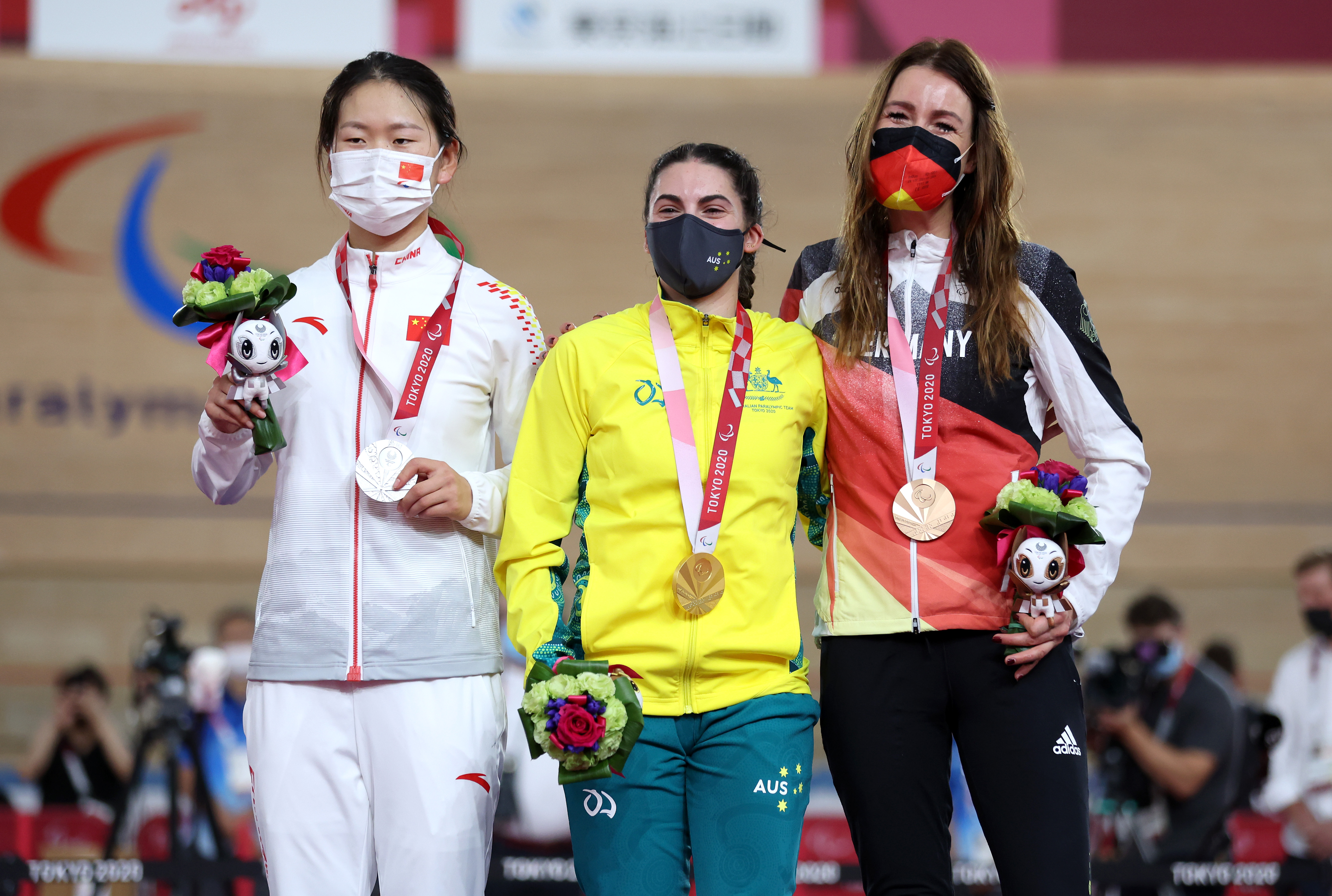Rhythmic gymnasts from Chicago's North Shore will have one last shot at a medal in the Tokyo Olympics.
While the United States was shut out of the individual final, its group that includes Lili Mizuno, Camilla Feeley, Nicole Sladkov, Isabella Connor, Yelyzaveta Merenzon and Elizaveta Pletneva will compete in qualifiers on Saturday.
Orland Parks' Evita Griskenas and Libertyville's Laura Zeng fell just short of advancing in their quest for an Olympic medal in individual event Friday morning.
Team USA, which has already made history as part of the first-ever full rhythmic gymnastics team the United States has ever sent to an Olympics, comes from the suburban training facility North Shore Rhythmic Gymnastics Center.
Feeling out of the loop? We'll catch you up on the Chicago news you need to know. Sign up for the weekly Chicago Catch-Up newsletter here.
"We're like sisters," Sladkov said. "I mean we're family. We've been together for quite some time."
Sladkov said that inseparable bond not only helps them off the carpet, but on.
"There's five of us on the carpet and we're tossing to each other, communicating with each other, in sync with each other," she said. "I would say the hardest part about group is it's catching that moment when we're all together, in sync, like, not just moving but like we have the same breath together, we have the same energy."
Tokyo Olympics
Watch all the action from the Tokyo Olympics live on NBC
"I don't think there's any other team in, like, in the sport that has the kind of bond that we have," she said.
Often the forgotten genre of Olympic gymnastics, the sport is like combining its more famous cousin, the artistic gymnastics practiced by superstars like Simone Biles and Sunisa Lee, with ballet and a circus. Gymnasts dance as they throw and catch items — hoops, balls, ribbons, a pair of clubs — bending and twisting across a carpet so quickly it’s often impossible for the untrained eye to understand its intricacy.
Griskenas described rhythmic gymnastics as a combination of "gracefulness and elegance" mixed with "lots of strength."
"There's lots of cross training that's involved that incorporates ballet technique and dance, as well as, again, lots of like strength training and conditioning," she said.
Twirling the satin ribbon — nearly 20 feet long — requires keeping their wrists in constant motion, for instance. They roll the balls and hoops around their bodies. They launch the clubs into the air then acrobat to the opposite side of the 40-foot competition floor to catch them the precise moment they fall. Point deductions are taken for a stray throw, a wayward ribbon, a missed catch.
In this sport dominated since its inception by Russia, America’s rhythmic gymnasts say they hope their increased presence in Tokyo could mark a turning point for the sport back home, where they are often dismissed as ribbon twirlers and hula hoopers.
"It feels thrilling, but also in a way, full of responsibility because now I'm not only responsible to myself and my family and, you know, my coaches and stuff, but also to my country and to represent rhythmic gymnastics like from USA is a really big deal to me and I want to do the best that I can do when I perform," she said.
It is intended to look effortless, but to make it so, they trained all day every day for months.
Many of the American rhythmic gymnasts don’t sugarcoat their chance at winning.
“Definitely probably not,” laughed Mizuno, a member of the five-women team. The team barely qualified for the Olympics, squeaking into the lineup by a tiny margin. “It’s almost a miracle that we are able to be here at this moment right now.”
Both the individual and group performers will compete at qualification Friday and Saturday morning, followed by the individual final Saturday evening and the group final Sunday in Tokyo. The Russians remain seemingly unbeatable, and until the United States invests more in their sport, they’re unlikely to reach a podium, many of America's athletes acknowledged.
But they’re determined to make the most of it to gin up interest in rhythmic gymnastics, which is changing in ways they think could appeal to an American audience.
It has historically been performed to classical music; its origin involved a live pianist accompanying the gymnast from the sidelines. But the rules have loosened to allow songs with words, and some gymnasts are incorporating genres like hip hop, techno and mainstream pop songs.
One of the group's performances this year will be to a techno remix of Bon Jovi’s “It’s my Life” — an unapologetically American song, Mizuno said.
They dream of a day when rhythmic gymnastics is well-known enough in the United States, people on planes stop mistaking their rubber-tipped clubs for bowling pins.
“The U.S. has finally started shouldering our way in,” Griskenas said, and laughed. “Or maybe I should use a rhythmic gymnastics pun: we’re clubbing our way in. Here we come.”
The qualification rounds for the event begin at 8:20 p.m. CT.
HOW TO WATCH: Stream it live here.




